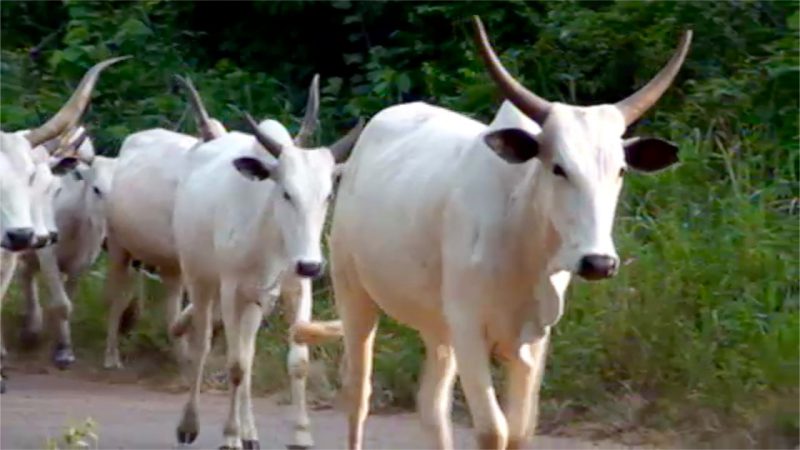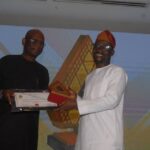Last week, I saw a short piece titled ‘Why Open Grazing must be Discontinued’ attributed to Tanimu Yakubu Kurfi, former Chief Economic Adviser to President Umaru Musa Yaradua and a great model and mentor of mine. Mr. Kurfi who is an economist, narrated his discovery while serving as a cabinet member of the Katsina State government in 1999 that open grazing was a key factor responsible for destroying vegetative cover in Northern Nigeria and thereby causing desertification. I immediately thought that this is precisely one of the angles of this conflict that most people fail to see. Indeed, open grazing directly results in increased desertification through long-term over grazing, particularly in semiarid rangelands. This is not mentioning the deforestation by lopping branches for use as fodder and felling of trees to make way for pastures as well as the increased greenhouse gas effect through the production of methane as well as the water and environmental pollution through animal wastes.
However, my interest in this open grazing conundrum goes beyond the environmental ramifications it spells. After all, some may argue that faeces and urine from grazing animals can build soil organic matter reserves, resulting in soils having increased water-holding capacity and increased water-infiltration rate and as such is not entirely detrimental to the environment. While this is true, it is only obtainable when the animal grazing is properly managed and organised for that purpose.
- Northern elders kick as Ondo introduces Oodua Anthem in schools
- Northern youths divided over open grazing ban
I am sternly opposed to open grazing chiefly because of how unimaginative it is, especially in this time. Even a casual observer of Nigerian agriculture can tell you the abnormal degree of labour-time and manpower wasted when livestock rearing is done by grazing on foot by both cow and herder over long distances in search of grass and water. The answer of the Fulani herder to the drying of water and pasture in the north should not be limited to crossing ecological zones over vast distances with the cattle to the tropical forest belt in the south. This is perhaps understandable a century ago, when it didn’t matter that a lot of labour time is consumed by this one mode of activity and manpower is taken away from the scene of other economic activities in these migrations and when there were not really many options or indeed many conflicts as a result of the migrations.
Besides, experts have since deduced that the long-distance cattle have to walk exposes them to the dangers of both health and nutrition ranging from those caused by insects like ticks, tsetse flies and even bites from snakes. Moreover, the exertion makes for a considerable use of energy by the cattle and therefore loss of weight. Cattle in the temperate zones of the world have to deal with snow and those in the Savannah zones of Nigeria and many parts of Africa have to deal with water and grass shortage in the dry season. Both situations need human imagination and by allowing open grazing to continue for so long, we have failed woefully in innovating to improve agricultural productivity in our livestock.
Nevertheless, to really understand this lack of imagination one has to look at the history of our agricultural policies, which have for so long neglected the undertaking of the production of fodder, such as grasses and clovers rich in protein for livestock. It is even more pathetic that this absence of policy stemmed from Nigeria’s colonial administration when there was already a general awareness of the importance of the development of protein-rich grasses and other fodder crops for the growth of the livestock industry in Europe and elsewhere.
In colonial Nigeria, the Fulani herder was walking thousands of kilometers in search of grass and yet Nigeria was exporting millions of tons of groundnuts from under the cows. From the Nigerian export of groundnut, which was one of the world’s highest at the time, extracts were taken to feed cattle in Europe, while Nigerian herders chased the rain and often starved while at it. The colonial government focused so completely on its crop production and export that there was basically no provision for animal feed or livestock development in its agricultural policies, which an independent Nigeria also inherited.
In our quest for a sustainable livestock sector, a food secure and nourished nation, we must confront the question of where the material for feeding the cattle and other livestock will come from. Many a research has shown that a considerable amount of grass grows unattended in the tropical and Savannah areas of Africa, yet, no indigenous research or national effort focuses on harvesting grass, sorting it and distributing it to farmers. For many decades, we had no clear industrial policy for manufacturing livestock feeds and medicines. Everywhere else from Europe to North America and even South America of late where the livestock sector has flourished illustrates the fundamental importance of fodder for agricultural development and nutritional self-sufficiency.
Talking of imagination, the total value of Brazilian crops saw a 365 per cent rise between 1996 and 2006 with the country’s beef exports increasing tenfold within a decade and overtaking Australia as the world’s largest beef exporter. Brazil also has the world’s second-largest cattle herd and is the world’s largest exporter of poultry, sugarcane and ethanol. This is all thanks to a great research institution in the country called Embrapa (Portuguese for ‘The Brazilian Agricultural Research Corporation’), a state-owned research corporation affiliated with the Brazilian Ministry of Agriculture, which has been devoted to developing technologies, knowledge and technical-scientific information aimed at Brazilian agriculture, including livestock. Their mission is to “develop research, development and innovation solutions for the sustainability of agriculture, for the benefit of Brazilian society”.
I visited Brazil in 2018 and sat with Muricio Antonio Lopes, President of Embrapa in Rio De Jeneiro at an event we had invited him under the auspices of the Massachusetts Institute of Technology to speak about innovation and imagination in agriculture. Embrapa’s success has been phenomenal and I wanted to hear from the horse’s mouth why particularly their livestock sector was outstanding and in such a relatively short period. His answer was precise and direct. Brazil, first of all, tropicalised its breeding system by importing cattle that adapted to their tropical belt from India instead of temperate regions. Through Embrapa, Brazil invested a lot in breeding, genetics, tropical grasses, developing their open pasture systems and generally improving the environment and soil fertility in ensuring adequate animal feed production especially grasses.
To end the numerous security, environmental and economic conflicts surrounding open grazing, Nigeria must be more imaginative in not only discontinuing open grazing but proffering a long lasting solution to this simple, yet costly problem.
This is perhaps why, Professor Okello Oculi in his cerebral 1984 work titled Food and the African Revolution, asserts that “it is not difficult to perceive the need for a revolution in feeding livestock: a revolution which would attempt to stabilise the feed basis of this sector of agriculture”.

 Join Daily Trust WhatsApp Community For Quick Access To News and Happenings Around You.
Join Daily Trust WhatsApp Community For Quick Access To News and Happenings Around You.


